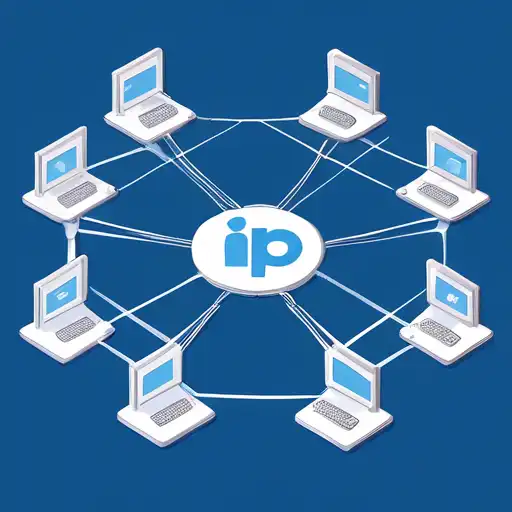Introduction to IP Addresses
In the vast world of networking, understanding IP addresses is fundamental. An IP (Internet Protocol) address is a unique identifier assigned to each device connected to a network, enabling communication between devices. This guide will walk you through the basics of IP addresses, their types, and their importance in networking.
What is an IP Address?
An IP address is a numerical label assigned to each device participating in a computer network that uses the Internet Protocol for communication. It serves two main functions: identifying the host or network interface and providing the location of the host in the network.
Types of IP Addresses
There are two main types of IP addresses: IPv4 and IPv6. IPv4, the most widely used version, consists of four numbers separated by dots (e.g., 192.168.1.1). IPv6, the newer version, was developed to deal with the long-anticipated problem of IPv4 address exhaustion and is represented by eight groups of four hexadecimal digits.
Why Are IP Addresses Important?
IP addresses are crucial for the functioning of the internet. They allow devices to find and communicate with each other, enabling everything from sending emails to streaming videos. Without IP addresses, the internet as we know it would not exist.
Understanding IPv4 and IPv6
While IPv4 addresses are limited to about 4.3 billion unique addresses, IPv6 offers a virtually unlimited number of addresses. This section delves deeper into the differences between these two protocols and why the transition to IPv6 is essential for the future of the internet.
The Structure of an IP Address
An IPv4 address is divided into two parts: the network prefix and the host identifier. The network prefix identifies the network to which the device belongs, while the host identifier identifies the specific device within that network. IPv6 addresses are more complex, designed to accommodate the growing number of devices connected to the internet.
How IP Addresses Are Assigned
IP addresses can be assigned statically or dynamically. Static IP addresses are manually assigned to a device and remain constant, while dynamic IP addresses are assigned by a DHCP server and can change over time. Each method has its advantages and is used in different scenarios.
Practical Applications of IP Addresses
From setting up a home network to managing a corporate IT infrastructure, IP addresses play a vital role. This section explores how IP addresses are used in real-world scenarios, including remote access, network security, and online gaming.
Remote Access and VPNs
IP addresses enable remote access to networks through technologies like VPNs (Virtual Private Networks), allowing users to securely connect to a network from anywhere in the world.
Network Security
Understanding IP addresses is also crucial for network security. By monitoring and managing IP addresses, administrators can protect networks from unauthorized access and cyber threats.
Conclusion
IP addresses are the backbone of the internet, facilitating communication between devices across the globe. Whether you're a networking novice or looking to refresh your knowledge, understanding the basics of IP addresses is essential for navigating the digital world.
For more insights into networking basics, check out our guide on Networking Fundamentals.
